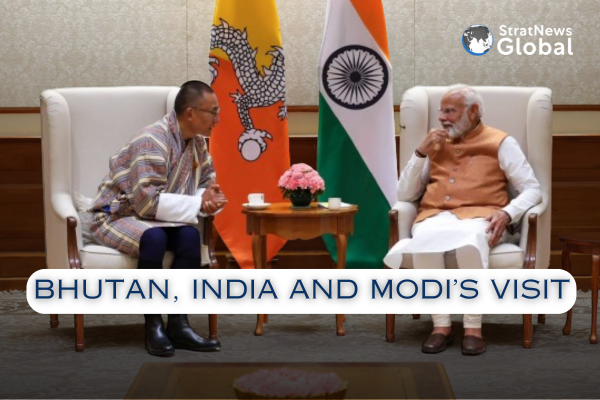It may seem odd that less than a week after hosting his Bhutanese counterpart Tsering Tobgay, Prime Minister Modi is packing his bags for two days (Mar 21-22) in Thimphu. A ready explanation offered by a former Indian diplomat was that “Any relationship requires tending, and back and forth visits are not only needed to build trust and understanding, it’s also to send the appropriate signals to whoever may be watching.”
In this case, the “whoever” may not be hard to recognise given some element of commonality in the diplomatic and other maneuvers Thimphu and Delhi have had to resort to vis a vis this neighbour. But the India Bhutan relationship has its own dynamic as Modi’s visit underscores.
“Bhutan is signalling its proximity to India,” says the former diplomat. Sandwiched between authoritarian China and democratic India, Thimphu made its preference for the latter evident a long time ago, and the relationship has grown despite pressures sometimes verging on outright blackmail from Beijing. This applies especially to their territorial dispute.
Reports say China wants Bhutan to hand over the 89 sq. km Doklam plateau in the western part of the kingdom. It overlooks the Chumbi Valley in Tibet and the Siliguri Corridor, India’s only land link to the northeast. In return it’s prepared to give up its “claims” in northern Bhutan (Jakarlung and Pasamlung) and Sakteng in eastern Bhutan bordering Arunachal Pradesh.
Talks have dragged on for years and the diplomat described it thus: “They are nowhere close to a resolution of the boundary and this is unlikely to change so long as China continues with its aggressive, intimidatory style even when dealing with smaller neighbours.”
In a word, Bhutan needs Indian handholding and India needs Bhutan to remain firm and not give an inch to China. Modi’s visit is a signal of the commitment of both capitals. Other signals hint at an expansion of the military relationship with India, possibly supplying drones to help Thimphu monitor its border areas. There could be more on the cards but with so much at stake, Thimphu and Delhi would prefer this work go on behind closed doors.
More than that, Bhutan is banking on Indian support for its ambitious Gelephu Mindfulness City project, basically a special economic zone in the south of the kingdom bordering India, with an international airport and road and rail links to boost connectivity. The Bhutanese government hopes this will draw investment, boost tourism and stop the exodus of young people to foreign shores.
The Gelephu project would require India to step up its financial commitment to Bhutan, but involving private players from different business and industrial sectors may work better. The Gelephu project could be another element to India’s Act East Policy, building on geography to drive economic growth.
















